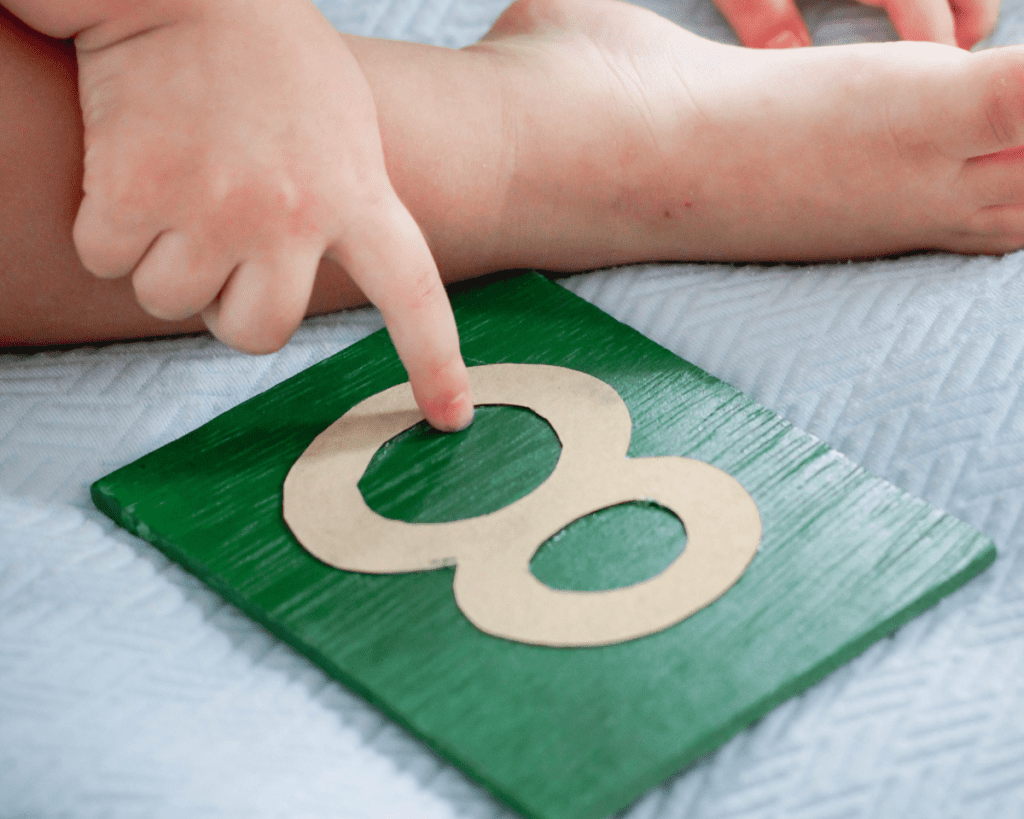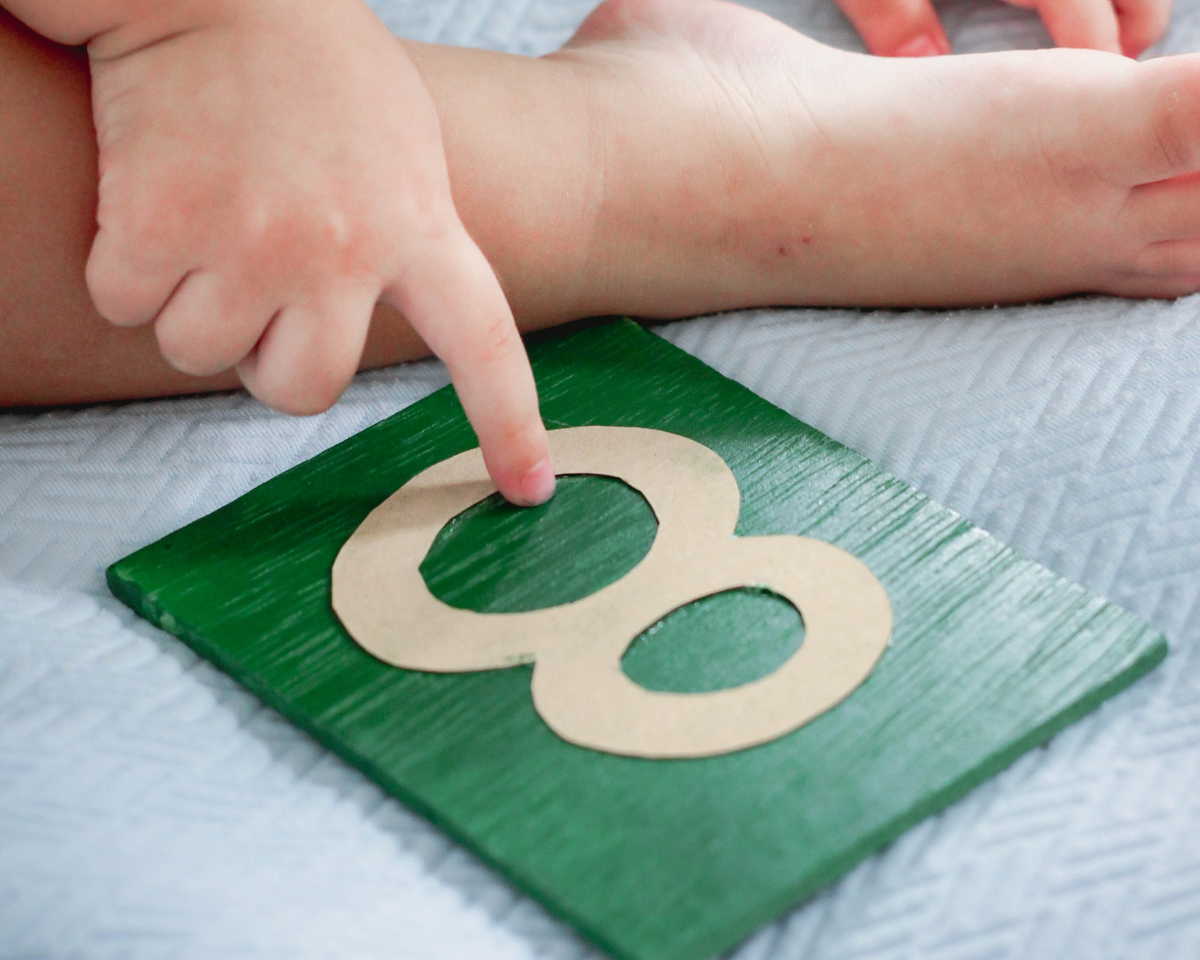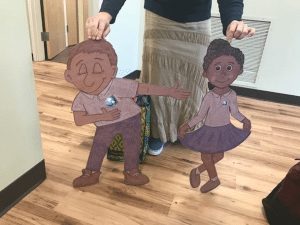Evolution of Pre-Writing Montessori Materials

The child’s development toward writing begins in infancy. Montessori education is based on the child’s brain development, emotional development, and needs within the environment. So, in Montessori schools, we provide didactic materials (materials that are specifically used to teach a concept or skill) that encourage their physical development while weaving the educational concepts into their curriculum at the correct time – when they are physically ready. Sure, we can say “write ‘B’ like this” but if the child’s wrist is not able to make a full circle – wouldn’t that be a bit challenging for the child…?
To encourage a love of writing;
First – we stack!
 Grasping cylindrical objects is comfortable for the youngest infant as their grip is very tight and often the object fits entirely inside of the infant’s hand. Grasping and releasing each cylinder while also coordinating the balancing of the cylinder creates intricate finger movements and requires concentration.
Grasping cylindrical objects is comfortable for the youngest infant as their grip is very tight and often the object fits entirely inside of the infant’s hand. Grasping and releasing each cylinder while also coordinating the balancing of the cylinder creates intricate finger movements and requires concentration.
Then – we transfer!
 Mastering the large palm grasp, the child can now move to a smaller grip, a pincer grip or “pencil grip”. The stacking cylinders and rings on a dowel are similar in that their direct aim is to stack the objects. Yet, the dowel presents more of a challenge and allows the fingers to move separately from one another.
Mastering the large palm grasp, the child can now move to a smaller grip, a pincer grip or “pencil grip”. The stacking cylinders and rings on a dowel are similar in that their direct aim is to stack the objects. Yet, the dowel presents more of a challenge and allows the fingers to move separately from one another.
Now – we cross the midline!
 This means transferring objects from one hand to another, across the middle of the chest. This crossing of the midline encourages both sides of the body to work together, promotes equal balance, strengthens the child’s trunk/core, and gives them the ability to rotate while sitting. Crossing the midline is imperative to basic human functions.
This means transferring objects from one hand to another, across the middle of the chest. This crossing of the midline encourages both sides of the body to work together, promotes equal balance, strengthens the child’s trunk/core, and gives them the ability to rotate while sitting. Crossing the midline is imperative to basic human functions.
Next – we twist!
 Rotating dials and gears, twisting nuts and bolts, opening and closing jars, sewing, and cutting with scissors all encourage wrist rotation, independent finger movements, and crossing the midline.
Rotating dials and gears, twisting nuts and bolts, opening and closing jars, sewing, and cutting with scissors all encourage wrist rotation, independent finger movements, and crossing the midline.
After that – we trace!
 Metal insets may appear to be a geometry material but these were created 100+ years ago by Maria Montessori to highlight every curve, angle, line, and point of each letter in the alphabet. At this point, a child is ~3 years old, has mastered their pincer grasp, can cross the midline, and can scribble freely on paper. By tracing, we train the wrist, hand, and fingers to form that natural “scribble” into actual letter formations and eventually words. This is why Montessori schools still teach cursive – it makes more sense to the brain!
Metal insets may appear to be a geometry material but these were created 100+ years ago by Maria Montessori to highlight every curve, angle, line, and point of each letter in the alphabet. At this point, a child is ~3 years old, has mastered their pincer grasp, can cross the midline, and can scribble freely on paper. By tracing, we train the wrist, hand, and fingers to form that natural “scribble” into actual letter formations and eventually words. This is why Montessori schools still teach cursive – it makes more sense to the brain!
Finally – we write!

Introducing the sounds the letters make, the concept of beginning, middle, and ending sounds, and how letters make sounds when combined together is presented alongside the materials the child uses to train their body for the writing. The concentration and coordination writing requires is similar to what reading requires – which is the next step!


